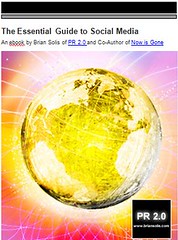Twitter Traffic Surges to 10 Million: The Demographics Driving the Growth

Twitter continues to defy all those who question its relevance. Exploding from 6 million visitors at the beginning of the year, ComScore released its latest numbers that portray an almost vertical ascent through the end of February 2009, hitting an astonishing 10 million worldwide.
Perhaps more interestingly, is the demographics that are fueling the groundswell. According to ComScore, the majority of visitors around the world were 35 years old or older, which match Nielsen's assessment of those groups representing the majority of Facebook's user base. In fact, ComScore observed that 45-54 years olds are 36 percent more likely than average to visit Twitter, followed by 25-34 years olds, who are rank at 30 percent.
Similar to Facebook, a social network initially intended to connect college students, Twitter immediately flew beyond the youth culture it expected to support it.
In the U.S., 10 percent of Twitterers fall between age 55 and 64, which is equal to those existing users between 18 and 24.
The traditional class of early adopters has now proliferated across every demographic, giving birth to a new genre of respective echo chambers that are now present in every market.

Twitter is an increasingly popular service not only because it provides a platform to proactively share updates, it's the surfacing of real world dialogue that reveals true sentiment and social trends, linking those with something to say and others looking for conversations related to important themes and keywords.
It's one of the most compelling and critical catalysts for businesses to flock to the dynamic micro community. It serves as our attention dashboard and our new source of information and direction. I'd also argue that Twitter and the Facebook News Feed (the statusphere) will ultimately replace bookmarks and RSS feeds for the masses, as we increasingly rely on friends and peers to serve as our social seismograph for relevant and contextual data.
Helpful Posts on PR 2.0:
- The End of the Innocence
- The Social Effect
- The Conversation Prism 2.0
- Putting the Public Back in Public Relations is Now Available
- Twitter and Social Networks Usher in a New Era of Social CRM
- The Human Network = The Social Economy
- In the Statusphere, ADD Creates Opportunities for Collaboration and Education
- Humanizing Social Networks, Revealing the People Powering Social Media
- Are Blogs Losing Authority to the Statusphere?
- I Like You
- Tracking Brands on Twitter to Improve How You Listen and Engage
- The Ties that Bind Us - Visualizing Relationships on Twitter and Social Networks
- Make Tweet Love - Top Tips for Building Twitter Relationships
- The Battle for Your Social Status
- Twitter Tools for Communication and Community Professionals
- Is Twitter a Viable Conversation Platform
- Is FriendFeed the Next Conversation Platform
Connect with me on:
Twitter, FriendFeed, LinkedIn, Tumblr, Plaxo, Plurk, Identi.ca, BackType, Social Median, or Facebook
---
Subscribe to the PR 2.0 RSS feed.
---
Now available:


---
pr pr+2.0 pr2.0 public+relations marketing advertising interactive social+media socialmedia brian+solis social media media2.0 media+2.0 2.0 smo social+media+optimization marcom communication publicity twitter facebook tweet comscore students youth statusphere












7 Comments:
I did a quick survey (using Twitter itself, of course) to find the newest Twitter user I could, and checked their profile internal info using the API. As of about a week ago there had been over 24 million accounts created. Of course, this is not the same as "active users", since many if not most accounts are dormant or abandonded and many spam accounts have been deleted or deactivated by Twitter. Still, it's a pretty interesting statistic.
Very interesting data and analysis. I recently gave a talk at Social Media Jungle Boston in which I asked the question "What happens when the other 90% of the population starts using the conversational web?"
http://blog.tweetworks.com/2009/03/11/tweetworks-tv-episode-42-social-media-jungle-boston/
I think you made the right distinction here in stating that accounts are not active users. It's also important to remember that more and more of us have multiple accounts. And of course not all unique visitors are equally active.
I'd love to see data on active users. People who tweet multiple times per day and who interact with other users (this would strip out the bots). As I relayed in my story at SMJBOS, I signed up for Twitter and had no real use for it over the first few months I had the account.
I dove in because I was motivated to leverage the tool. I still can't help but wonder if the average person will be willing to adopt Twitter as it is.
Is it possible that Comscore's age analysis is off because younger users interact with Twitter without going to the site, i.e. via Tweetdeck and texting? I have no idea, but am very curious.
wow, that looks like Al Gore's notorious "hockey stick" chart of CO2 level increases since the industrial revolution...
twitter's low barrier to adoption and entry is one reason for its high octane growth. add to that the network effect, with greater numbers of new users able to actually connect with friends, and the move up is likely to only accelerate. networks will "indensify". there will be high rates of churn, as many who joined to check it out drop out when the novelty wears off. but if twitter and its third party apps can help to build micro-communities, there's a good chance that twitter becomes the next facebook -- non profile-based open social networks based on messaging.
brian, do you have anecdotal evidence around what this is doing for and to brands on twitter? how are their efforts scaling as the population explodes?
and does anyone have churn data?
cheers,
adrian
All I can say is that Facebook community grows faster that's what I really notice. I both have twitter and Facebook account but I spend more time twitting:-)
I was initially surprised that only 1 in 30 of my business undergrad students at a very entrepreneurial school in the Netherlands has a twitter account, and even the one is not active. But this demographic data reaffirms my observation that the 20 year olds are not very interested in twitter and the more older people use it, the less interested they will be!
The human feed is winning.... hurray! But Twitter is still best understood by those of us who understand blogging and RSS... and perhaps it's still an older market? Not sure about that still.
Slowly but surely, Twitter, and to some extent Facebook status (threaded convos there so very different) will teach consumers the value of feeded information. It's that *human trust* element folks will always crave online no matter what app or device they use.
Peace, Brian!
Post a Comment
<< Home